
Look Up VIN History: The Complete Guide to Checking a Vehicle’s Past
Buying a used car in the U.S. can be a smart financial move — or a costly mistake — depending on one thing: whether you’ve taken the time to look up its VIN history. That simple 17-character Vehicle Identification Number holds the truth about a car’s past — accidents, flood damage, title issues, odometer rollbacks, and more.
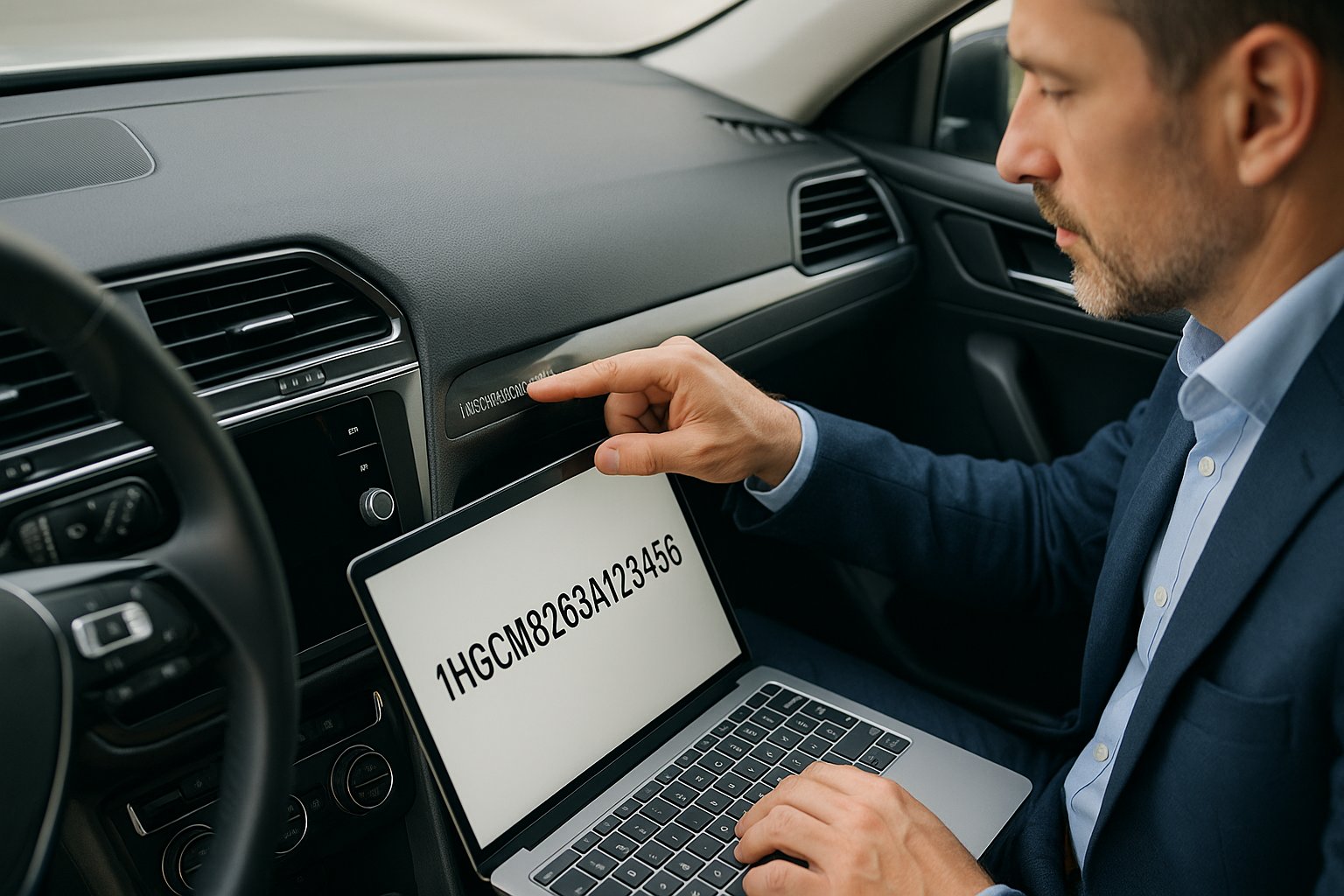
In this guide, you’ll learn how to look up VIN history properly, which tools are trustworthy, what red flags to watch out for, and how VINspectorAI makes the process faster, smarter, and more reliable.
What Is a VIN and Why It Matters
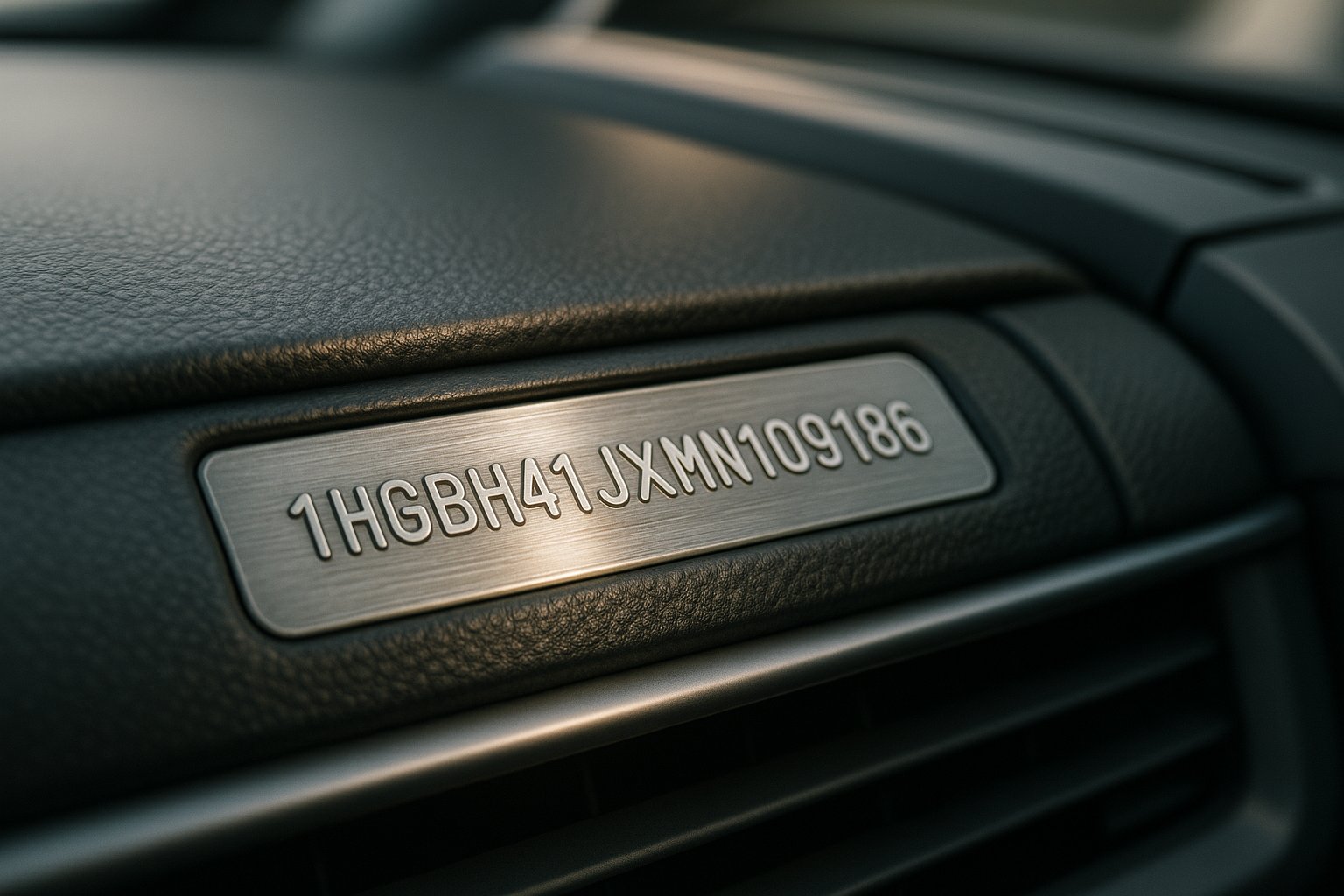
Every vehicle manufactured after 1981 has a unique 17-character VIN (Vehicle Identification Number). Think of it as your car’s DNA — it identifies the make, model, engine type, country of origin, and a lot more.
A VIN is divided into three main sections:
WMI (World Manufacturer Identifier): tells you who built the vehicle.
VDS (Vehicle Descriptor Section): gives details about the model, engine, and body type.
VIS (Vehicle Identifier Section): includes serial numbers and manufacturing details.
When you look up VIN history, these details connect to massive databases that pull records from DMVs, insurance companies, police reports, and auto auctions, creating a full picture of the car’s background.
Why You Should Look Up VIN History Before Buying
Hidden damage, flood repairs, title washing, or odometer fraud — these are the nightmares every buyer wants to avoid. A simple VIN lookup can uncover:
Major accidents or airbag deployments
Title brands such as salvage, rebuilt, or lemon
Flood or fire damage
Mileage inconsistencies
Theft records
Recalls or manufacturer defects
Checking VIN history isn’t optional anymore — it’s the smartest insurance you can buy before signing a deal.
How to Look Up VIN History (Step-by-Step)
There are two main ways to look up VIN history: free and paid methods. Let’s go through both.
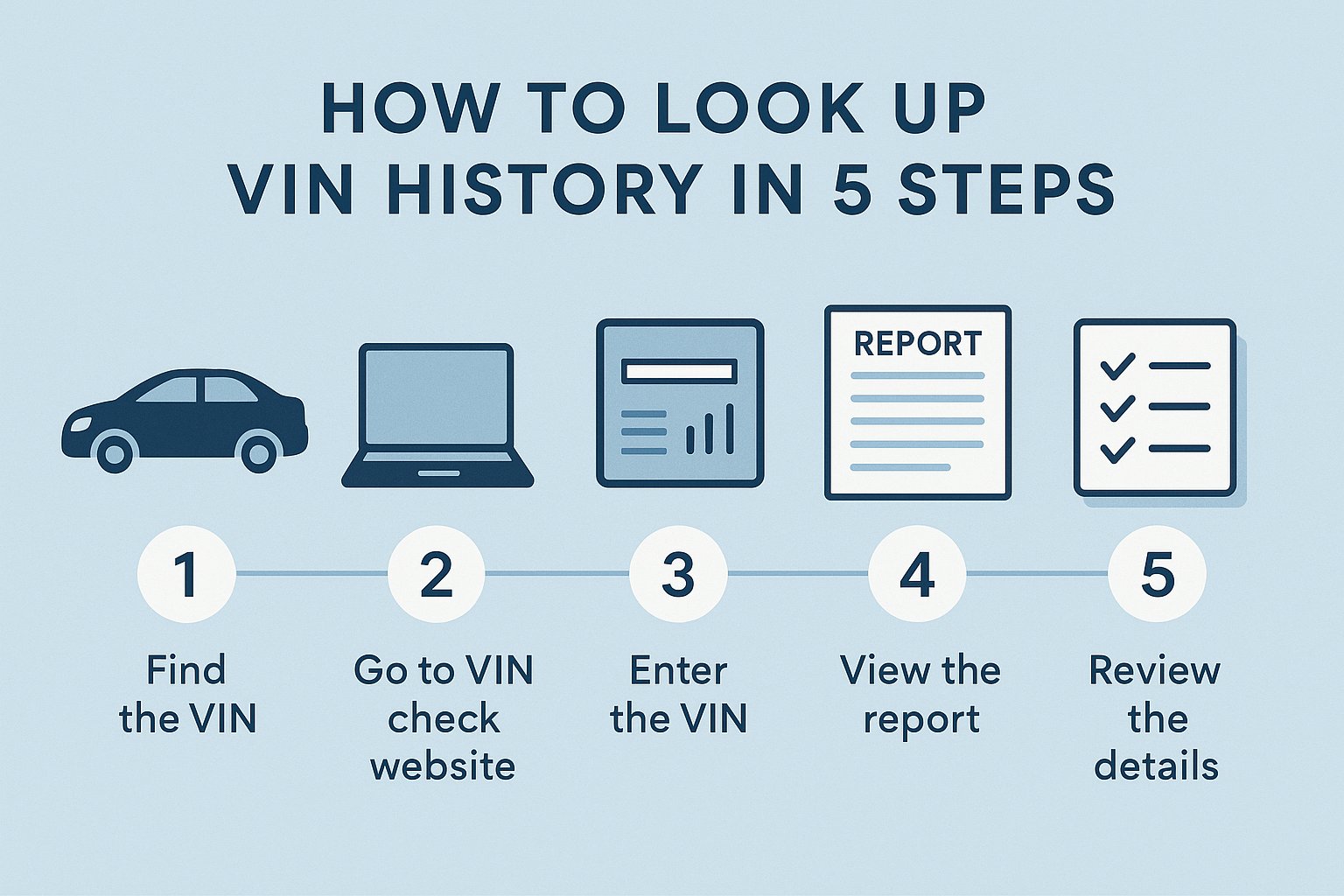
1. Free VIN Lookup Tools
You can start with government and nonprofit databases that provide limited data for free:
NHTSA.gov: for safety recalls and manufacturer defects.
NICB.org: for theft and total loss records.
State DMV websites: some states (like Texas or California) allow basic title verification online.
However, free tools rarely show accident details, previous owners, or flood damage history — that’s where professional VIN history reports come in.
2. Paid VIN History Reports
Services like Carfax, AutoCheck, and VINspectorAI gather data from multiple trusted sources — including NMVTIS (National Motor Vehicle Title Information System) — to give you a comprehensive, up-to-date report.
What you get from a paid report:
Full accident and title history
Odometer readings from service and inspection stations
Ownership changes
Flood, fire, and theft records
Auction photos and damage grades (if available)
Paid tools save you hours of searching and reduce risk when you’re spending thousands on a used car.
Why VINspectorAI Is Different
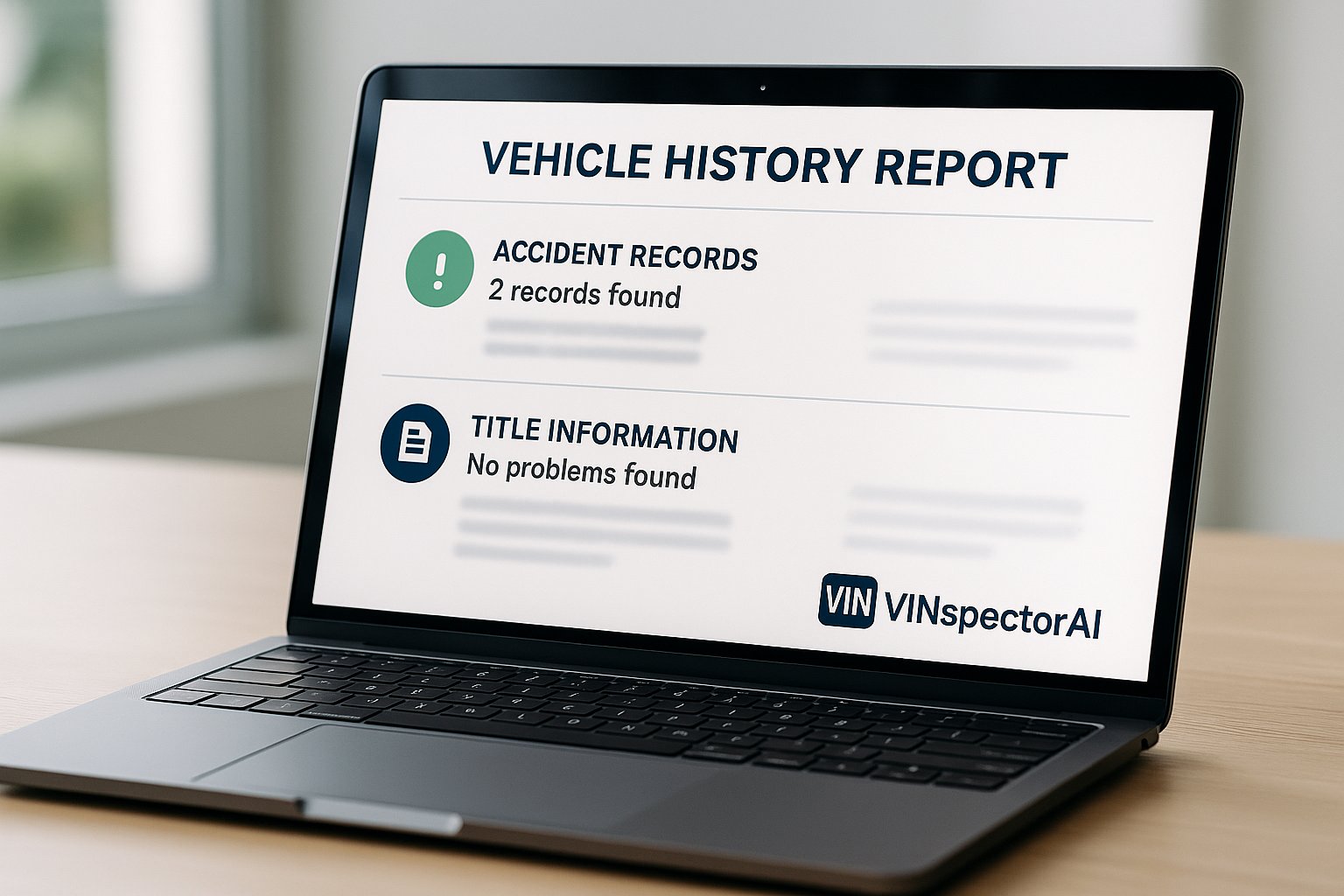
Unlike traditional VIN check platforms, VINspectorAI uses AI technology to interpret and summarize your vehicle’s report automatically. Instead of reading dozens of technical lines, you get a human-readable summary that tells you:
“This car had a minor front collision in 2019.”
“Title branded as rebuilt — avoid unless inspected by a mechanic.”
“No flood or theft history detected.”
VINspectorAI also cross-references data from NMVTIS, insurance companies, auctions, and state DMVs, offering clarity even when other sites show conflicting results.
You can even compare multiple vehicles side-by-side or run bulk checks if you’re a dealer.
Checklist: How to Look Up VIN History Like a Pro
Locate the VIN — usually on the dashboard (driver’s side), door frame, or vehicle title.
Double-check the VIN characters (no spaces or mistakes).
Run the VIN through a trusted database (VINspectorAI, Carfax, AutoCheck).
Compare the report with the seller’s claims.
Look for accident, flood, or title inconsistencies.
Verify odometer readings — sudden drops or resets = red flag.
Check recalls and inspection dates.
Save the report for your records.
Understanding Red Flags in a VIN Report

Even a car that looks spotless might hide problems. When you look up VIN history, watch for:
Salvage or rebuilt title: means serious previous damage.
Multiple ownership changes in a short time: potential flip or hidden issue.
Flood title or corrosion notes: often found in coastal or hurricane-affected states.
Mileage rollback: sudden drops in recorded odometer readings.
Insurance total loss: indicates it was written off at some point.
If you see one or more of these warnings — walk away or negotiate hard.
Free vs. Paid VIN Lookups: What’s the Real Difference?
Feature | Free Lookup | Paid Report (VINspectorAI) |
|---|---|---|
Basic Title Info | ✅ | ✅ |
Accident History | ❌ | ✅ |
Odometer Records | ❌ | ✅ |
Flood / Fire / Theft | ❌ | ✅ |
Recalls | ✅ | ✅ |
NMVTIS Data | ❌ | ✅ |
AI-Powered Summary | ❌ | ✅ |
Report PDF Download | ❌ | ✅ |
If you’re just checking for recalls, a free lookup works.
But if you’re spending $10,000–$40,000 on a used car, a $20 VINspectorAI report could save you from losing thousands.
Final Thoughts
Before you buy any used vehicle, always look up its VIN history. It’s a 2-minute step that can save you from years of regret.
And if you want the fastest, most reliable way to do it — powered by AI and verified by NMVTIS — check your car’s past now with VINspectorAI.com.
Because every great deal starts with the truth.
Frequently Asked Questions
Get answers to common questions about Look Up VIN History: The Complete Guide to Checking a Vehicle’s Past
Uncover Complete Vehicle History Reports
Discover critical vehicle information before you buy. Our VIN decoder reveals accident records, title status, recalls, and service history to help you make informed decisions.
Related Articles
Explore Tags
More from Car Buying Guide

Check VIN number Texas-wide to uncover title, accident, and mileage history. Compare free lookup tools with NMVTIS data and get AI-powered insights | VINspector

Simple tips for buying a used car. Learn how to check VIN, inspect the car, and avoid common mistakes for a safe and affordable purchase | VinspectorAI
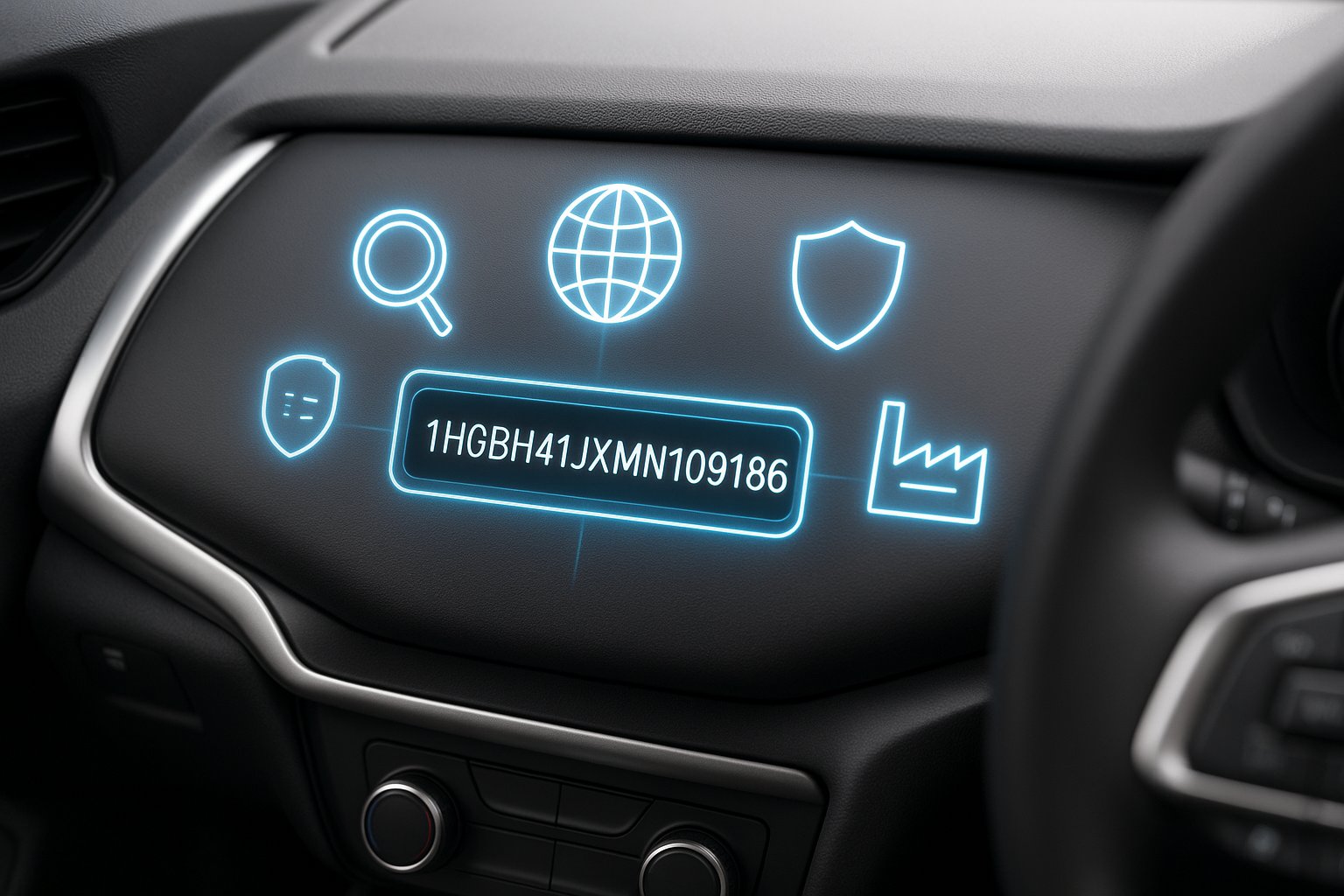
Learn 5 surprising car facts by VIN that reveal hidden details about your vehicle’s history, recalls, specs, and build secrets. Decode your VIN with Vinspector.